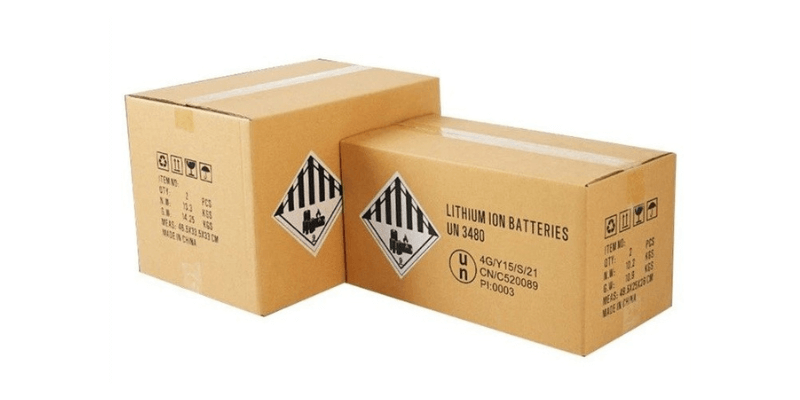الوجبات السريعة الرئيسية:
- تتأثر تكلفة بطاريات الليثيوم بعوامل تشمل تكوين الخلية، وأنظمة إدارة البطارية، وتصميم العبوات المخصصة، والاختبار/الشهادة.
- يعد فهم هذه العناصر أمرًا بالغ الأهمية لإدارة النفقات بشكل فعال وتحسين أداء البطارية.
عندما يقوم الأفراد أو الشركات بالشراء حزم البطارية، النفقات هي نقطة التركيز الرئيسية.
في عام 2023، سيبلغ متوسط تكلفة حزمة بطارية السيارة الكهربائية في عام 2023 128 دولارًا/كيلوواط ساعة. وهذا أقل بكثير من السعر في عام 2008، والذي كان 1355 دولارًا للكيلووات في الساعة. ومع ذلك، تجدر الإشارة إلى أن بطاريات الليثيوم كانت دائمًا في الطرف الأعلى من تكاليف كيمياء البطارية.
يتأثر سعر بطاريات الليثيوم بمجموعة متنوعة من العناصر. وتشمل هذه الخلية نفسها، و نظام إدارة البطارية (BMS)ونظام حزمة البطارية الشامل وتكاليف الاختبار والشحن.
خلايا البطارية
وتمثل خلايا البطارية الفردية حوالي 80% من إجمالي نفقات الإنتاج. تتكون خلية البطارية من عدة أجزاء: الكاثود، والأنود، والكهارل، والفاصل، والغلاف الخارجي.
تميل مواد الكاثود وعمليات إنتاجها إلى أن تكون العناصر الأكثر تكلفة، تليها تكاليف الأنودات والفواصل بشكل مباشر.
يتكون الكاثود في المقام الأول من الليثيوم الممزوج بالكوبالت أو النيكل أو المنغنيز، في حين يستخدم الجرافيت عادةً في الأنود. يمكن أن تختلف أسعار السوق لهذه المواد بناءً على العرض والطلب، وقد أدى الطلب المتزايد على الإلكترونيات والمركبات الكهربائية عالية الأداء إلى ندرة هذه المعادن.

من المتوقع أن يتضاءل توافر الموارد العالمية بحلول عام 2050. وقد أثارت قضايا مثل موجات الحر التي تؤثر على إمدادات الليثيوم في الصين والمخاوف المتعلقة بممارسات تعدين الكوبالت في جمهورية الكونغو الديمقراطية قضايا بيئية وقضايا حقوق الإنسان.
ونظرًا للاضطرابات السياسية في بعض المناطق، لا يتمتع المصنعون في سوى عدد قليل من البلدان بإمكانية الوصول الموثوق إلى كميات كبيرة من هذه المواد، مما يؤدي إلى اضطرابات محتملة في سلسلة التوريد.
ونتيجة لهذه العوامل التي تؤدي إلى ارتفاع التكاليف، فمن المرجح أن تقوم الشركات المصنعة بزيادة أسعار الخلايا استجابة لذلك.
نظام إدارة المباني
تؤثر آليات الحماية والشحن لبطاريات الليثيوم بشكل كبير على تكلفة تصنيع حزم البطاريات.
تماشيًا مع اللوائح الدولية، يجب أن تكون جميع بطاريات الليثيوم مجهزة بنظام إدارة المباني. هذا النظام مكلف بمراقبة حالة شحن البطارية (SoC) وحالتها الصحية (SoH)، وحماية البطارية من التلف وإطالة عمرها عن طريق منع الشحن الزائد أو التفريغ الزائد.
تعتمد تكلفة BMS على الميزات التي يحتاجها العملاء في أجهزتهم. تقوم وحدات BMS الأساسية بمراقبة SoC وSoH ودرجة الحرارة. قد تتضمن الوحدات المتقدمة موازنة البطارية، والساعات في الوقت الحقيقي، ومسجلات البيانات، والمزيد. المزيد من الميزات تزيد من تكاليف BMS. يعد الفهم الواضح لمتطلبات الطاقة أمرًا ضروريًا للعملاء لتحديد المستوى المناسب من الميزات التي سيتم تضمينها في نظام إدارة المباني.

أثناء عملية الشحن، يتم استخدام الدوائر المتكاملة (ICs) داخل شاحن البطارية. هناك أنواع مختلفة من الدوائر المتكاملة المتاحة، مثل أجهزة الشحن الخطية وأجهزة الشحن ذات الوضع التبديلي. لا تقوم هذه الدوائر المتكاملة بشحن البطارية فحسب، بل توفر أيضًا الحماية ضد الجهد الزائد والتيار الزائد.
تعتمد النفقات المرتبطة بشواحن البطاريات على ما إذا كان العملاء يفضلون تضمين أجهزة الشحن مع حزمة البطارية للاستخدام الفوري أو السماح للمستخدمين النهائيين باختيار أجهزة الشحن الخاصة بهم. يؤثر الاختيار بين أجهزة الشحن المخصصة والقياسية أيضًا على التكلفة، حيث تكون أجهزة الشحن المخصصة عادةً أكثر تكلفة.
نظام حزمة البطارية المخصصة
يتكون نظام حزمة البطارية من حاوية البطارية ومجموعة متنوعة من المكونات، بما في ذلك أحزمة الأسلاك والمرحلات والموصلات وبرامج BMS وأنظمة الإدارة الحرارية للتدفئة والتبريد. تضمن هذه المكونات إمداد الطاقة المستقر لبطاريات الليثيوم لمختلف الأجهزة.
في حين أن أحزمة الأسلاك والموصلات ونظام إدارة المباني هي مكونات قياسية، فقد تم تصميم عناصر أخرى لتلبية الاحتياجات المحددة للتطبيقات المختلفة.
في عملية تصميم نظام حزمة بطارية مخصص، فإن إضافة مكونات إضافية ستؤدي إلى زيادة تكاليف التصنيع بشكل متناسب.

ومن المهم أيضًا ملاحظة أن استبدال مكونات معينة بمواد أقل تكلفة (مثل المرحلات) قد يؤثر على الأداء العام وعمر البطارية. يجب على العملاء مراعاة التوازن بين تكاليف التصميم والتصنيع لنظام حزمة البطارية وأدائه وجودته.
في بعض الحالات، يمكن أن يؤدي اختيار نظام حزمة بطارية عالي الجودة، على الرغم من ارتفاع التكاليف الأولية، إلى توفير طويل الأجل بسبب متانة البطارية المعززة.
الاختبار والشحن
الشركات المصنعة لبطاريات الليثيوم يجب التصديق على حزم بطاريات الليثيوم للسلامة قبل النقل.
بعض الشهادات، مثل CE، تتم داخل الشركة؛ البعض الآخر يتطلب مختبرات خارجية. وتتراوح التكاليف من 500 دولار إلى 30 ألف دولار، حسب نوع الشهادة. هناك حاجة إلى حزم العينات لكل من الاختبارات المدمرة وغير المدمرة.
قد تكون هناك حاجة إلى إعادة التصميم في حالة فشل الاختبارات، مما يزيد من التكاليف حيث يجب اعتماد التصميمات الجديدة أيضًا. قد يتطلب تبديل الشركات المصنعة، حتى مع نفس التصميم، إعادة الاختبار وإعادة الاعتماد. يجب على العملاء دائمًا تخصيص ميزانية لاختبار بطارية الليثيوم وإصدار الشهادات ومتطلبات النقل.

خاتمة
حاليًا، تعد تكاليف تصميم وإنتاج بطاريات الليثيوم أعلى من تكاليف الأنواع الأخرى من البطاريات الكيميائية.
ومع ذلك، مع التقدم التكنولوجي المستمر، يعمل المصنعون بنشاط لجعل هذه التركيبات الكيميائية أكثر فعالية من حيث التكلفة دون المساس بالطاقة التي توفرها للأجهزة المختلفة.
بالنسبة لأولئك الذين يتطلعون إلى تخصيص حزم البطاريات وأجهزة الشحن، فإن فهم متطلبات الطاقة الدقيقة لتطبيقاتهم أمر بالغ الأهمية. إن تزويد الشركات المصنعة بوثائق شاملة أثناء مرحلة التصميم يمكن أن يؤدي إلى حلول أكثر فعالية من حيث التكلفة. إن إشراك الشركات المصنعة منذ بداية عملية التصميم يمكن أن يساعد أيضًا في تخفيف تحديات التصنيع وتقليل النفايات، مما يؤدي في النهاية إلى نتائج أكثر فعالية من حيث التكلفة.

